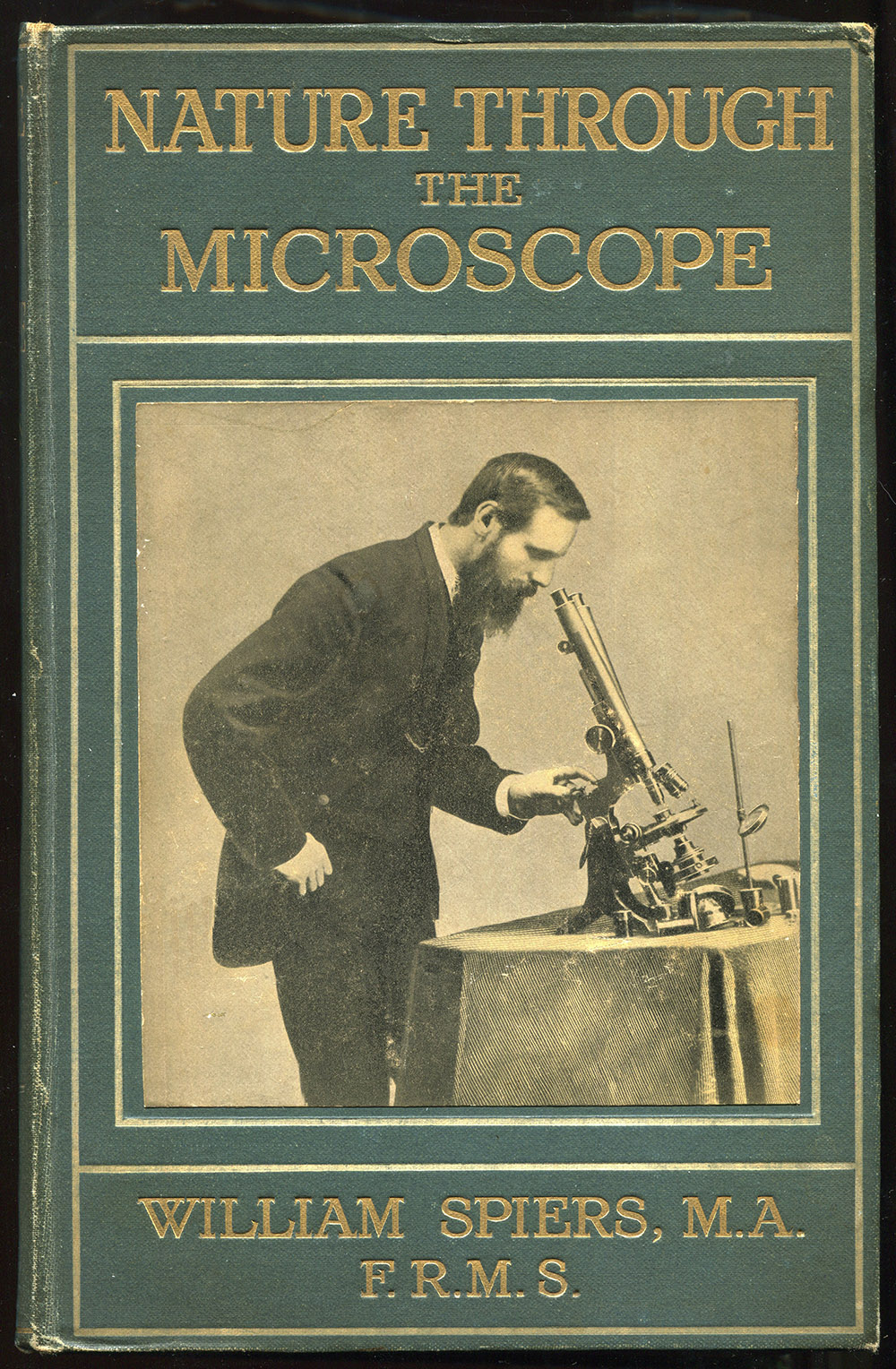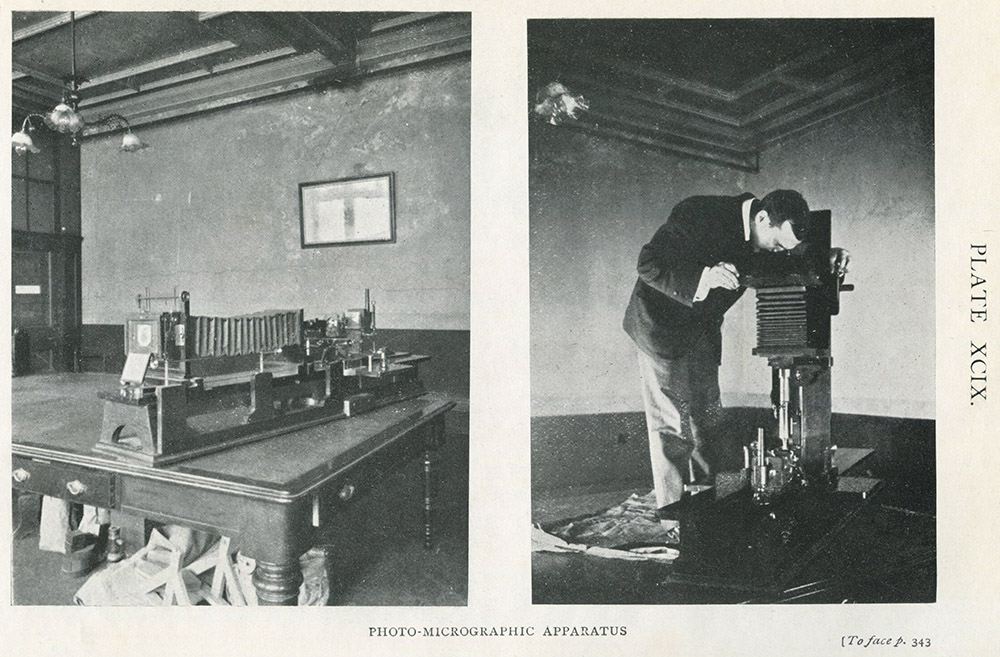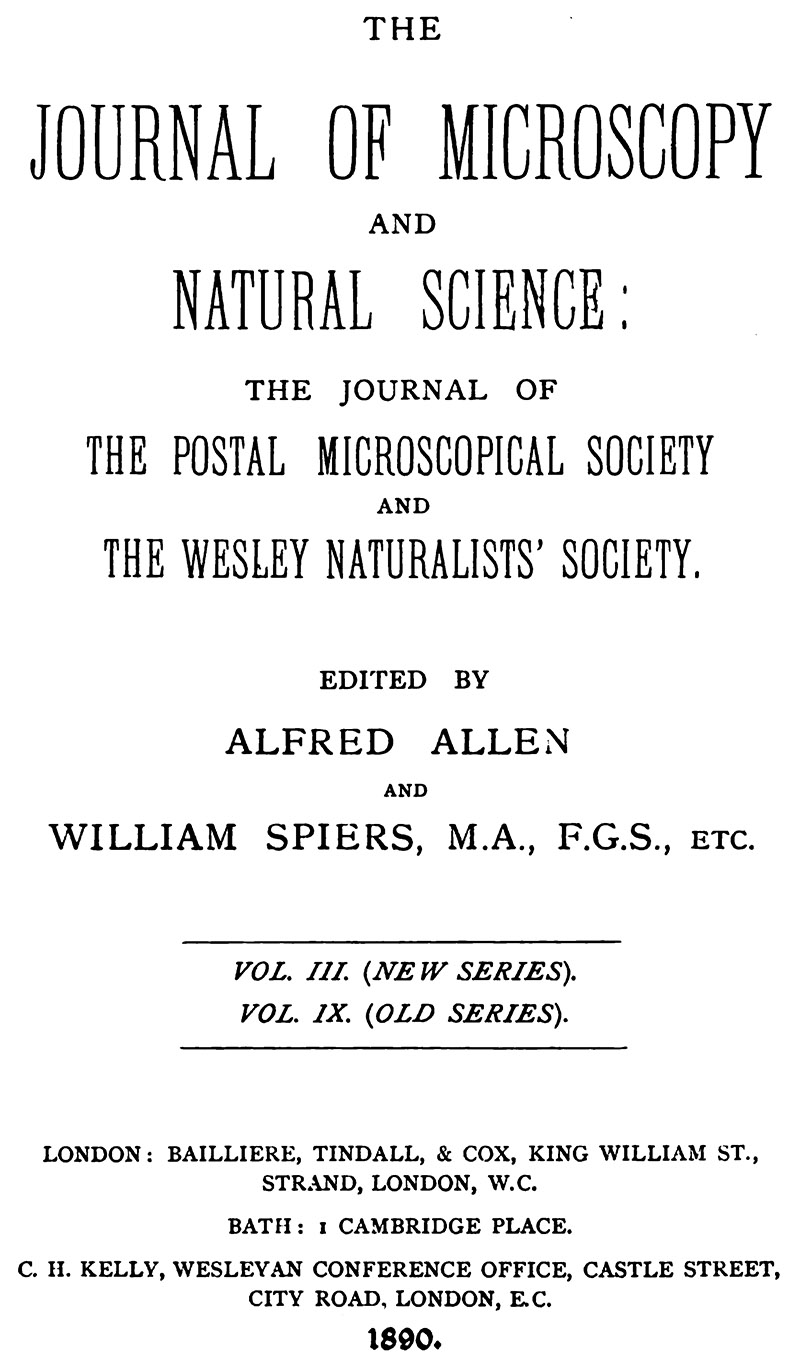
Figure 1. The cover of Spiers’ 1909 “Nature Through the Microscope”. Although not explicitly stated, it is reasonable to assume that the man in the photograph is Spiers.
William Spiers, 1847 - 1930
by Brian Stevenson
last updated September, 2018
William Spiers was a Fellow of the Royal Microscopical Society, Fellow of the Geological Society, editor of scientific journals, author of insightful books on microscopy and nature, photographer, and a Wesleyan minister. A good number of scientists in Victorian England were ministers, to an extent because they tended to be educated and had ample free time, but also because a common theological idea held that one could see the “hand of God” in the construction of nature. Microscopical examination was especially encouraged, as the microscope revealed the efforts that “the Creator” put into detailing things that are too tiny for humans to see. Spiers’ scientific writings are relatively non-religious, however. In the preface to his 1909 classic Nature Through the Microscope, Spiers writes, “the observation of Nature is most fruitful when carried on in harmony with the principles and laws of exact science”.
Beyond those insights on turn-of-the-twentieth-century philosophy, Nature Through the Microscope is of interest for its abundant photographs and drawings, almost all of which were produced by Spiers (Figures 1-5). He included two photographs of his camera-microscope setups (Figure 2).
Used copies of Nature Through the Microscope and his other classic, Rambles and Reveries of a Naturalist (1890), can often be found for very low prices. PDFs both can be downloaded through the internet.

Figure 1.
The cover of Spiers’ 1909 “Nature Through the Microscope”. Although not explicitly stated, it is reasonable to assume that the man in the photograph is Spiers.

Figure 2.
Pictures of Spiers’ photomicrography set-ups, from “Nature Through the Microscope”. The man in the right photograph may be Spiers’ assistant in the project, J.F. Hammon, F.R.M.S., or it may be Spiers without a beard

Figure 3.
“Nature Through the Microscope” is well-illustrated with Spiers’ photographs and exquisite drawings.

Figure 4.
Another plate of a photograph and drawings from “Nature Through the Microscope”.

Figure 5.
Drawings by Spiers, from “Nature Through the Microscope”.

Figure 6.
“Nature Through the Microscope” included ten watercolors by one of William Spiers’ daughters, Edith. She later became a professional photographer, and operated a commercial studio in Brighton.
William Spiers was born in 1847 near Leicester. His early life is unclear, but he was probably the boy of that name who was listed in the 1861 census as attended a boarding school in Solihull, Warwickshire. He was ordained a minister in the Wesleyan Church, probably in 1872. William married Amy Sewell in York on August 3, 1877. They had five children, the eldest a boy, followed by four girls. Due to his ministerial assignments, the Spiers family moved homes every few years, traveling all over England.
Spiers was elected to membership in the Geological Society of London in 1883, and the Royal Microscopical Society in 1886.
Also in 1886, Spiers became an officer in the Wesley Scientific Society. Its president was the Reverend William Dallinger, Fellow of the Royal Society and President of the Royal Microscopical Society. Spiers and Dallinger worked closely together over the following years.
The Wesley Scientific Society began publishing The Wesley Naturalist in 1887. Spiers, Dallinger, and Hilderic Friend were editors (Figure 7).
In October, 1889, that magazine merged with The Journal of the Postal Microscopical Society, yielding The Journal of Microscopy and Natural Science. Spiers co-edited the new journal with the Postal Microscopical Society’s Alfred Allen (Figure 8).
Rambles and Reveries of a Naturalist was published in 1890. It is a collection of stories of Spiers’ hikes and explorations through a variety of different environments. It is fairly good nature-writing, designed to inspire people to get out and explore the natural world.
Spiers left the magazine in 1891. Alfred Allen wrote, “In writing the closing sheet of our Journal for the current year, I have with feelings of much regret to announce the retirement from the co-editorship of my esteemed friend, the Rev. W. Spiers, M.A., whose many other engagements render it impossible for him to continue the duties of this position. Whilst sincerely thanking him for his services during the past two years, I beg to inform our numerous readers and contributors - whose numbers, I am pleased to say, are steadily increasing - that I shall again take, as I had for the eight previous years, the sole charge and control of the Journal”.
Nature Through the Microscope, subtitled Rambles and Studies of a Microscopist, was published in 1909.
William Spiers retired from ministry around the same time. The 1911 census listed him and his family as living in Weston Super Mare, Somerset, described as “Wesleyan Minister, superannuated”. He died on October 19, 1930, in Hove, Sussex.

Figure 7.
Title page of a “Wesley Naturalist”, which lists William Spiers as an editor.

Figure 8.
Title page of the first issue of “The Journal of Microscopy and Natural Science”, edited by William Spiers and Alfred Allen, 1890.

Figure 9.
Title page of “Rambles and Reveries of a Naturalist”, 1890.

Figure 10.
A signed letter from William Spiers, dated 1915. He wrote that the “Wesley Naturalist” ended publication in October, 1889. The letter is included in the Google Books pdf of “The Wesley Naturalist”, Vol. 3, https://books.google.com/books?id=K-EVAQAAIAAJ
Resources
Allen, Alfred (1891) Editorial comments, The Journal of Microscopy and Natural Science, Vol. 3, pages iii-iv
England census and other records, accessed through ancestry.com and familysearch.org
The Journal of Microscopy and Natural Science (1891) Note from the Wesley Scientific Society, Vol. 3, page 64
Journal of the Royal Microscopical Society (1886) Minutes of the November 10 meeting, “The following were elected Ordinary Fellows: Messrs. Alexander Maubré, James A. Ross, M.D., Rev. William Spiers, M.A., and Wallace A. White”, page 1112
Probate of the will of William Spiers (1930) “Spiers William of 44 Westbourne-street Hove Sussex died 19 October 1930 Probate Lewes 18 November to Edith Mary Spiers, spinster. Effects £715 2s 6d”, accessed though ancestry.com
Proceedings of the Geological Society of London (1883) “Rev. William Spiers, M.A., Lily Bank, Chorlton-cum-Hardy, Manchester; and H.A. Williams, Esq., 91 Pembroke Road, Clifton, will be balloted for as Fellows of the Society”, April 25, page 77
Spiers, William (1882) Charles Robert Darwin, Wesleyan-Methodist Magazine, pages 488-494
Spiers, William (1887) A ramble through the Caterham district, The Wesley Naturalist, Vol. 1, pages 289-292
Spiers, William (1890) Dips into my aquarium (in 4 parts), The Journal of Microscopy and Natural Science, Vol. 3, pages 23-29, 83-88, 196-202, and 256-259
Spiers, William (1890) Rambles and Reveries of a Naturalist, Charles H. Kelly, London
Spiers, William (1891) Alcohol and blood, The Methodist Temperance Magazine, Vol. 5, pages 89-91
Spiers, William (1892) The duty of the Church to science and the influence of science on the Church, The Review of the Churches, Vol. 2, pages 319-320
Spiers, William (1900) Yeast, The Illustrated Annual of Microscopy, pages 29-37
Spiers, William (1909) Nature Through the Microscope; or, Rambles and Studies of a Microscopist, R. Culley, London
Spiers, William (1915) Letter to Mr. Sheppard, found in a copy of The Wesley Naturalist, https://books.google.com/books?id=K-EVAQAAIAAJ
Sussex PhotoHistory (accessed September, 2018) Edith Mary Spiers, http://www.photohistory-sussex.co.uk/hove_photographers_S-T.htm
The Wesley Naturalist (1887-1889) edited by William Dallmeyer, William Spiers, and Hilderic Friend